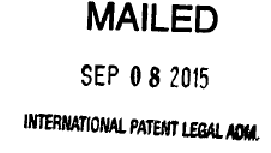Both of the EFS-Web servers (the main one and the “contingency” one) are crashed, and have been crashed since December 22. This means that if you are going to file a PCT application in RO/US, you are stuck doing it by hand-carrying it on paper to the USPTO or running a paper application down to the post office.
So what’s the smart way to file your PCT application just now?
I am indebted to alert reader Rick Neifeld who reminded me that the smart way is to file in RO/IB. And the smart way to file in RO/IB is of course to do it by means of ePCT.
The only thing to watch out for is the Foreign Filing License (FFL) situation. You need to make sure either to already have an FFL or not need one.
The way to not need an FFL is to have an invention that was not made in the US.
The easy way to already have an FFL is to have filed a priority application in the USPTO more than six months in the past (so that you will have received an automatic FFL just because six months passed). Or check your filing receipt on the priority application and hopefully it will say that you have an express FFL.


